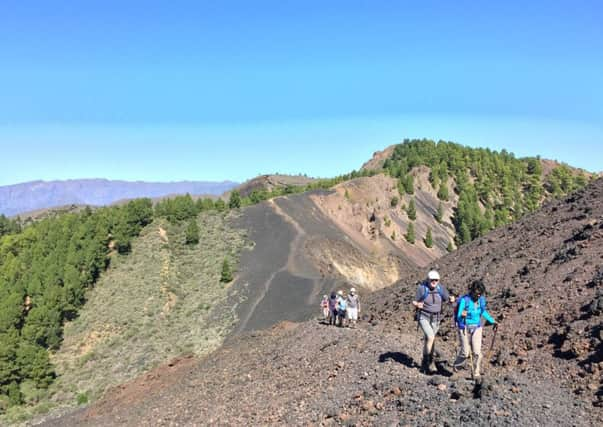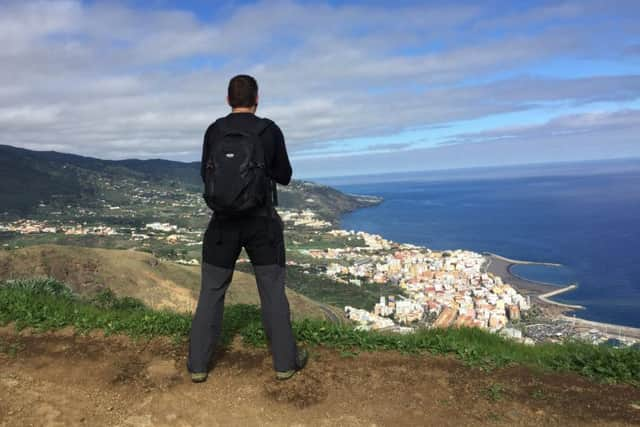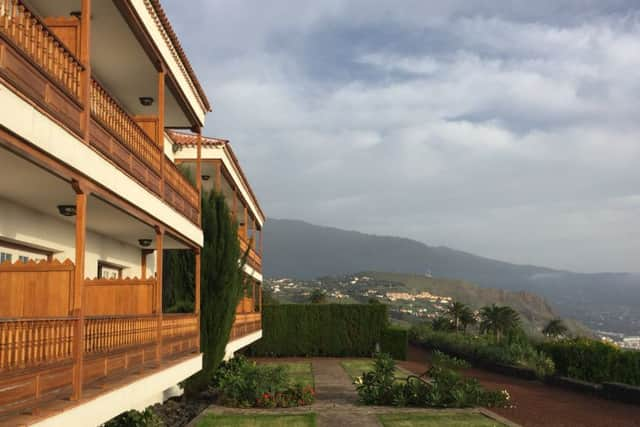Travel: Take a hike on La Palma


WHEN the Canarios themselves hail an island as “La Isla Bonita” you take notice. That is because the seven spectacular main Canary Isles and their myriad islets could all lay claim to being “The Beautiful Island”. But it is La Palma, an isle little touched by mass tourism, that people in this Macaronesian archipelago proclaim the most special of all. La Palma, as I discovered hiking along its trails for a week, is a subtropical oasis awash with active volcanoes, lush forests and a dramatically rugged coastline that well deserves this adulation.
Over two decades as a travel writer, other Ramblers Worldwide Holidays adventures have taken me hiking in Tenerife, Lanzarote, Fuerteventura and Gran Canaria and, while the other Canary Islands do offer world-class walking, La Palma takes things to another level. Unesco rates it so highly that it proclaimed it a Biosphere Reserve in 2002, and when you take into account its bijou size and its towering mountains – the peak of Roque de los Muchachos rises to 2,426m – it is the steepest in the world.
Advertisement
Hide AdIt is a remarkable environment, sweeping from the Atlantic Ocean into dense forests of sturdy pine and subtropical laurel, before a final dramatic flourish of vertiginous mountain peaks and epic volcanoes.


A part of the island that is well known – at least among mainland Spanish visitors – is the National Park Caldera de Taburiente. La Palma may be scenically and geologically varied, but it helps to think of it as one giant volcano which rose millions of years ago like a leviathan from the Atlantic depths. Indeed the volcanic term “caldera” was coined on the island by the German geologist Leopold von Buch to describe what he presumed was the collapsed volcanic “cauldron” of Taburiente. In fact, it is not a crater at all, but rather the gigantic arch of a mountain, spreading 10km across, its walls in places towering 2,000m above the ground below.
It was here during the 15th century Spanish conquest of La Palma that the indigenous people, the Benahoaritas, made their last stand after being betrayed in peace talks. Today the population of La Palma may be more settled, but its terrain is among the most volcanically active in Europe. The last major eruption was in 1971 and talk is rife about the next major eruption that everyone expects, with one theory that the ensuing tidal wave could threaten much of the US Eastern Seaboard.
My first walk instantly opened up the epic local scenery. Our guide – a charming Irish lady, Ita, who expertly looked after us on trail and off – arranged for taxis to the start point. We spent the morning and early afternoon trekking through dry barrancos (gorges) in the hills around San Pedro.
On one flank the cobalt Atlantic sparkled in welcome. On the other slopes rose improbably steeply through thick forests into the volcanic netherworld. Here the high peaks lay hidden up above the Cumbre Vieja – the volcanic ridge that often protects the loftier summits with a shroud of cloud. The next day we ventured into this lunar landscape, walking from Montes de Luna to El Faro, a trip that swept us through thick forest, across lava fields and finally dropped us down to the coast by way of a hike up the Teneguia volcano. From its summit views opened up of the neighbouring volcanic isles of La Gomera and El Hierro.


Our third day brought the most spectacular walk of all, its name giving the game away – the Ruta de los Volcanoes. This hike is up there with any I have tackled in Europe. After working our way through pine forests up on to a chunky ridge we rose up and down a series of volcanic peaks, enjoying lunch with a view of Tenerife across the water and its phenomenal peak, Teide, at 3,718m the highest mountain in Spain.
Advertisement
Hide AdAfter a rest day relaxing at the modern four-star H10 Hotel Taburiente Playa, with one of La Palma’s best beaches just a short stroll away and Tenerife in the distance (book a room with an ocean view and a balcony), our last two days of hiking took us deep into the national park, where on a brace of walks we saw more lizards and birds than people. We ended our first and began our second national park day at its visitor centre, which tells the story of the protected park and the geology of the island. A scale model of the national park helped the minds of our group wrap around the facts and figures of this unique landscape. A little bar lay across from the visitor centre, which came in handy when we reached the end of our walk. Many of our excursions ended with a glass of local beer, or a glass of one of the seriously underrated local wines, and a cake. Different parts of this continually diverse island boast their own welcome sugary treats.
I finished my adventure in the capital, Santa Cruz de la Palma. Strolling through the streets of a city that was once the most important in the Spanish empire alongside Seville and Antwerp, its sense of grandeur lingered on in the architecture. There were few other tourists around, though, especially after the cruise ships departed at sunset. I was staying at the Parador, a government-run hotel with epic views. From here I could run my eyes all the way from the ocean, up through the forests to the Cumbre Vieja, where a sheet of cloud kept secret the peaks and volcanoes of La Isla Bonita beyond.